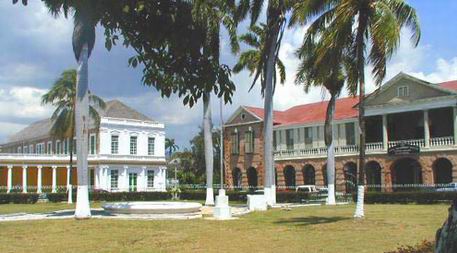
Beer and wine are in close competition as far as the oldest man-made brew, but beer wins just slightly. Beer recipes date back as far as 6000 B.C. while winemaking only goes so far as the first millennium. Coffee came onto the scene just a few hundred years later, although how old the coffee plant is still is unclear. Some evidence suggests that people were eating the berries as much as a hundred thousand years ago.
It has been said that an Ethiopian goat herder saw his goats become very excited after eating the red berries from one of the nearby trees and experienced the same stimulation when trying the berries himself. By 600 A.D., this stimulating berry and the resulting brew from its dried and ground seeds made its way to the southern tip of the Arabian peninsula to a location called Yemen.
Some stories speak of a native of India smuggling these seeds from a tree in Arabia around 1650 A.D. after which he planted them in the Chikmagalur hills since the law of Arabia at the time did not permit the exportation of beans that could germinate. This successfully controlled the coffee trade for many years. Whether this is myth or historic fact, the berries from those seeds now make up one-third of India's large coffee production.
The coffee bean then spread to many other countries thanks to travels of the Europeans, Dutch, French and British, among others. The Dutch introduced the coffee bean to Java during the eighteenth century which history relays as the famous tree the king of France coveted so greatly and that was finally gifted to him.
Louis XIV of France soon found that the tree did not grow well in frost and, consequently, he had a greenhouse built so he could continually be supplied with the beans that made the brew he so much desired. This is said to be the source of cultivators used in South and Central America.
Having reached Martinique around 1720 A.D., the seeds grew well in the Caribbean climate. Some of the thousands of trees that sprouted were transported to Mexico which is now one of the largest exporters of this coffee product.
The tree also grew well in the steamier environment of French Guiana when it finally reached this area around the same time. Francisco de Melo Palheta managed to get the help of the governor's wife to help smuggle the seeds out of the country. The story is that she handed him a bouquet of flowers containing the forbidden bean as he prepared himself to leave for Brazil. Interestingly, Brazil has become one of the largest coffee producers.
From Brazil, these seeds made their way to Kenya and Tanzania during the late nineteenth century which is, coincidentally, not far from Ethiopia. They nearly made a large circle as they traveled the globe, only taking around six centuries to do so. So, next time you enjoy a tasty, low-priced cup of coffee at a local restaurant, think about the history behind that drink. It may be plentiful now, but there was a time when it what just beginning its journey to where it is today.






No comments:
Post a Comment